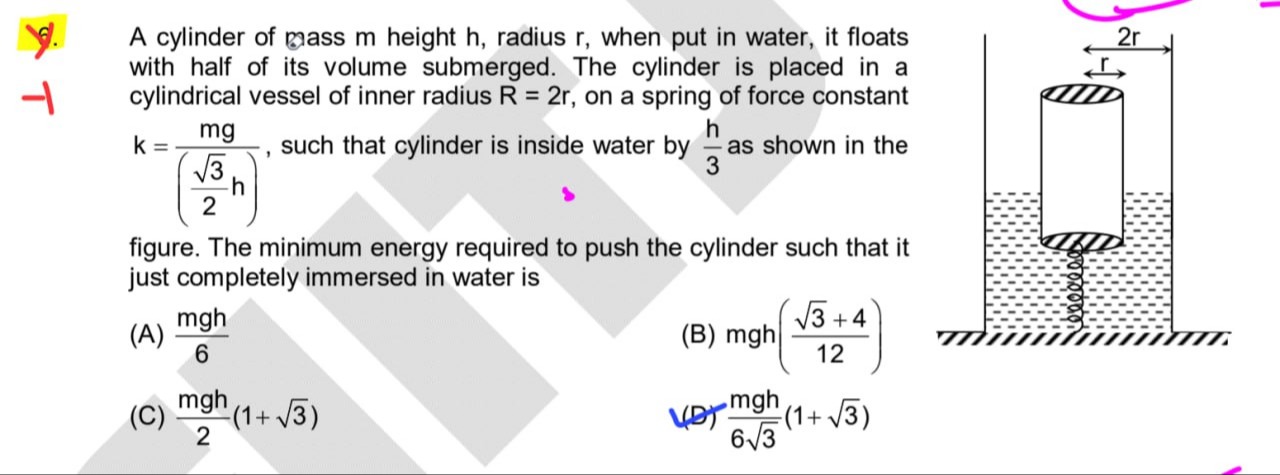Question
Question: A cylinder of mass m height h, radius r, when put in water, it floats with half of its volume submer...
A cylinder of mass m height h, radius r, when put in water, it floats with half of its volume submerged. The cylinder is placed in a cylindrical vessel of inner radius R = 2r, on a spring of force constant
k=(23h)mg, such that cylinder is inside water by 3h as shown in the figure. The minimum energy required to push the cylinder such that it just completely immersed in water is

6mgh
mgh(123+4)
2mgh(1+3)
63mgh(1+3)
mgh(123+4)
Solution
-
Write the extra energy (increase in spring energy + increase in gravitational energy of water – drop in the cylinder’s gravitational energy). Because the cylinder “displaces” extra water when pushed a distance u, the water level in a vessel of area 4A₍c₎ rises by y = u/5.
-
Hence, the net extra energy is ΔU(u)=21ku2+21(ρg⋅4Ac)(5u)2−mgu, with k=3h2mg [since mg=ρgAc(2h)].
-
Noting that “just complete immersion” requires u=65h, one finds that the maximum energy “barrier” (obtained by a standard procedure) is Wmin=mgh(123+4).
